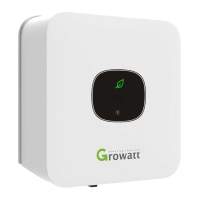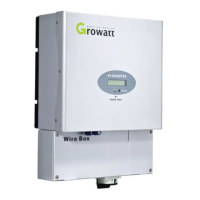
Do you have a question about the Growatt MIC 2000 TL-X and is the answer not in the manual?
| Rated Power | 2000W |
|---|---|
| AC Nominal Power | 2000 W |
| Max. AC Apparent Power | 2000 VA |
| THDi | < 3% |
| DC Switch | Yes |
| Protection Degree | IP65 |
| Weight | 6.2 kg |
| Nominal AC Voltage | 230V |
| AC Grid Frequency | 50 Hz / 60 Hz |
| Operating Temperature Range | -25°C to 60°C |
| Efficiency | 97.6 % |
| Cooling Method | Natural Cooling |
| Cooling | Natural Cooling |
Outlines the required training and expertise for individuals handling the inverter.
Lists essential safety guidelines for installing and operating the inverter according to standards.
Highlights specific dangers and precautions during the inverter's assembly process.
Details risks associated with wiring, touching live components, and residual voltage.
Covers safety measures during inverter operation, including heat and voltage risks.
Emphasizes safety measures and potential hazards during the installation process.
Guidance on choosing a suitable site considering environmental factors and accessibility.
Essential safety precautions related to high voltages and ESD during connections.
Step-by-step guide for connecting the AC output cable to the inverter.
Guidelines for safely connecting the photovoltaic array to the inverter's DC input.
Prerequisites for connecting the PV array, including module standards and connector types.
Detailed instructions for connecting the PV array, emphasizing voltage limits and polarity.
Guide on connecting signal cables for monitoring and communication devices.
Explains the necessity of connecting the inverter to the AC grounding conductor.
Configuration for active power control using smart meters or ripple control receivers.
The process of starting up the inverter for the first time.
Step-by-step instructions for safely powering on the inverter.
Guidelines for safely turning off the inverter.
Explains how to read and understand error codes displayed on the inverter's screen.
Guidance for identifying and resolving faults originating from the system, not the inverter.
Comprehensive technical data including input/output parameters, efficiency, and protection devices.











